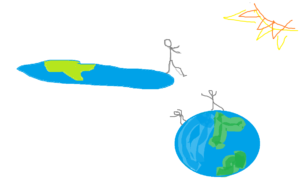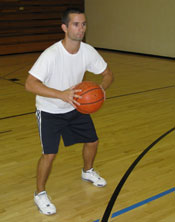Here I Am, As I AM
Start your day, start your choir, your class, your meeting with this powerful ‘locating’ practice, the foundation for well-being. Adapt the words and gestures to your situation, your needs. Meet yourself and the world exactly as you are and it is, in this moment, with no need to change or improve. Simple wake up to the moment, the sensations, the big picture. You in and of the world. (K)Now anything is possible. The song arrives.







The Language of Wholeness
Welcome again to The Center for Sound Music Education (CSME) and our blog. I am Babette Lightner one of the co-creative directors. I have been exploring human structure and function for 40 years. Here at CSME one of the underlying premises is that we are designed to function as a whole system. If that premise is true then how do we scaffold education from a Whole System perspective (Wholeness Perspective)? When you are part of Kalied Festival, Community through Choral Arts, other workshops and classes you are experiencing the Wholeness Perspective in action.
The Center for Sound Music Education (CSME) and our blog. I am Babette Lightner one of the co-creative directors. I have been exploring human structure and function for 40 years. Here at CSME one of the underlying premises is that we are designed to function as a whole system. If that premise is true then how do we scaffold education from a Whole System perspective (Wholeness Perspective)? When you are part of Kalied Festival, Community through Choral Arts, other workshops and classes you are experiencing the Wholeness Perspective in action.
To help you recognize this perspective I want to shine a light on the language aspect of Wholeness. To see the practical use of this perspective we will compare the affect of instructions about standing up from a Wholeness perspective to a postural/separate body from mind perspective.
Do this first:

- Stand up.
- Lean a little in different directions.
- Then come to relative even distribution of contact with your feet over the earth.
- Look around at the room you are in.
- Be ready to catch this ball I may throw to you or be ready to sip your tea.
We would do the following the first few times together to help people understand their relationship to gravity and the way the system works as a Suspension system.:
(Note that in a gravitational universe the earth is coming up underneath you just as you are coming down to meet the earth. Since most of us have been inundated with images and ideas of how gravity pulls us down let’s put a little more emphasis on the equally true but less detectable fact that there is an upward force of the earth up thru you. The huge difference in size makes undetectable the upward thrust. But none the less, the earth rises up under you and your feet come up under your lower legs, your lower legs come up under your thighs and this carries on in an upward direction right on through and out of you.)
- As you stand there don’t pull yourself up just notice there is a matching of downward forces with equal and opposite upward forces.
- Add to that idea the sense that your bones are extending away from each other, opening you up and out in space. You don’t have to hold yourself together or hold yourself upright.
- You simply want to be upright looking out at the world and your system, which matches the mechanical response to your intentions, will do exactly the perfect degree of resisting the spreading of bones and exactly enough allowing movement to let you remain standing in an open, easy, suspended way.
Compare the above instructions with the following instructions that come straight out of a November 2008 New York Times article on fitness and walking, (NYTIMES 11/13 /08 p. E11Learning How to Walk (Chewing gum not Included) by Sara Eckel).
- Bones stacked. Your body should fall in a straight line – ears, shoulders, hips and ankles.
- Buttocks released.
- Legs back. Set the muscles of your inner thighs back to allow the legs to fall directly underneath the pelvis. This will keep the pelvis level and the spine balanced.
- Belly strong. The stomach should be strong and the middle of your back filled out so you are using you entire core as you walk.
- Head lifted. Imagine someone is pulling a string from the back of your head, allowing the chin to fall to level …and the throat to soften.”
What is the experiential difference of the two ways of coming to standing?
What premise or point of view underlies each? Can you start to detect the point of view embedded in instructions? The first example is the Language of Wholeness the second is the Language of Separate Parts. In the Language of Wholeness you are not being asked to adjust your body in a specific way. You are being asked to do tasks and think about your system in relationship to the ground and gravity in a certain way. T he instructions let your complex system do the adjusting. In the Language of Separate Parts the instructions are asking your conscious mind to tell your body what to do and leave it there. This is a nice idea if we worked like that. But we don’t. You can get to a position for a few seconds but balance, movement and other demands of your system reorganize you in moments. Being upright is not something you are designed to specifically control. It requires billions of bits of information and responses to occur in milliseconds. Your job is to w
he instructions let your complex system do the adjusting. In the Language of Separate Parts the instructions are asking your conscious mind to tell your body what to do and leave it there. This is a nice idea if we worked like that. But we don’t. You can get to a position for a few seconds but balance, movement and other demands of your system reorganize you in moments. Being upright is not something you are designed to specifically control. It requires billions of bits of information and responses to occur in milliseconds. Your job is to w ant to be upright to do something.
ant to be upright to do something.
The goal of alignment and postural ideas is to help you function better, to set you up to sing well, play and instrument well. The problem is in how those ideas are communicated. What you need to function, to do a task, is similar across the board. The system wants volume in the torso around the organs, flexibility, stability and mobility. What this looks like from the outside is parts of the body seem lined up. It isn’t a task you need to control. It happens quite naturally when we are alert and available to take action to: catch a ball, bounce a basketball, push a piano, paint a wall, wave to a friend. The tors o retains its natural length, width and depth without any holding. Your limbs are free to move at the joints. It is essentially natural core strength. Playing an instrument and singing are also functions, tasks, not unlike bouncing a ball. If you stand and look out at your audience and you aren’t feeling like you can bounce a ball easily then you aren’t in an optimal organization to make music. While the intention of alignment ideas is good, the faulty idea is that you need to control alignment, position yourself. If you learn a few tools for understanding balance and clarifying where your joints are and other self-assessment tools you can set yourself up for optimal functioning. It is the heart of teaching and learning from WHOLENESS. We will look at these tools in other blogs and in on-line courses we will be offering.
o retains its natural length, width and depth without any holding. Your limbs are free to move at the joints. It is essentially natural core strength. Playing an instrument and singing are also functions, tasks, not unlike bouncing a ball. If you stand and look out at your audience and you aren’t feeling like you can bounce a ball easily then you aren’t in an optimal organization to make music. While the intention of alignment ideas is good, the faulty idea is that you need to control alignment, position yourself. If you learn a few tools for understanding balance and clarifying where your joints are and other self-assessment tools you can set yourself up for optimal functioning. It is the heart of teaching and learning from WHOLENESS. We will look at these tools in other blogs and in on-line courses we will be offering.
When we take advantage of our Wholeness we allow for the possibility of optimal performance and greatest efficiency with least chance of injury. Parts aren’t fighting with parts. The authority for how to be in the world remains with you, your system.
We would love to continue this journey of learning with you. Why don’t you register to be a part of our community? You will be welcomed into our community forums where you can participate in conversation with others who are exploring the same concepts. You will also get access to resources, new podcasts, and notifications about upcoming workshops and webinars. Click the button below to register.

